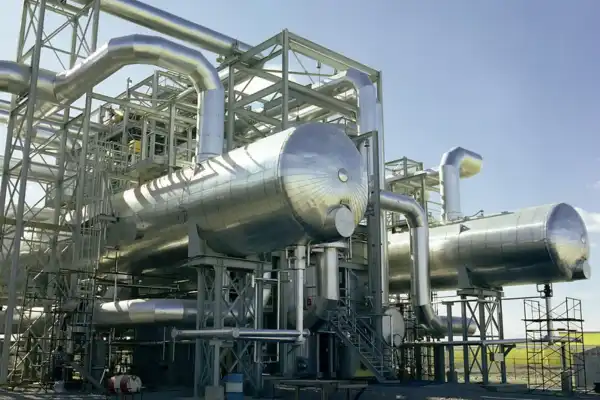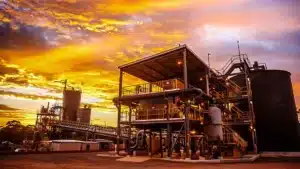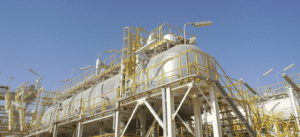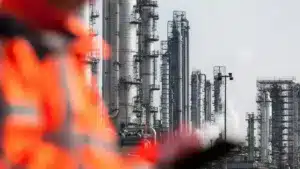CO₂ Corrosion Prevention and Control in Oil and Gas Production

CO₂ corrosion, commonly known as ‘sweet corrosion’ in the oil and gas industry, presents a significant challenge to facility integrity and operational reliability. This form of corrosion can lead to substantial economic losses through equipment failure, production downtime, and increased maintenance costs.
Understanding the Corrosion Mechanism and its Impact on Oil & Gas Production
The chemistry behind CO₂ corrosion is straightforward yet can have a costly impact. When carbon dioxide dissolves in produced water, it forms carbonic acid (H2CO3), which aggressively attacks carbon steel infrastructure. This process is particularly concerning in wet gas systems, where the combination of CO₂ and water creates an ideal environment for corrosion.
The corrosion rate is influenced by several critical factors:
- Temperature variations
- Operating pressure
- Flow conditions
- Water chemistry
- CO₂ partial pressure

What are the Most Critical Areas of Concern Around Corrosion in Oil & Gas Production?
Inspection and maintenance personnel should pay particular attention to several high-risk areas within their facilities:
Wet Gas Systems
Internal diameter corrosion in wet gas systems presents unique challenges due to the constant exposure to CO₂-saturated fluids. These systems often experience accelerated corrosion rates at points where water accumulates or where flow patterns change.
CO₂ Transportation Pipelines
Pipeline integrity management becomes crucial when transporting CO₂-rich hydrocarbons. The internal surfaces of these pipelines are particularly vulnerable to sweet corrosion, especially in areas where water dropout occurs.
CO₂ Strippers and Reboilers
These process units face severe corrosion challenges due to high CO₂ concentrations and elevated temperatures. The combination of these factors can lead to rapid deterioration of carbon steel components.
Carbon Capture and Storage (CCS) Considerations
The growing implementation of CCS technology introduces additional corrosion challenges that require specialized attention and prevention strategies:
CCS Infrastructure Challenges
CCS facilities face unique corrosion risks due to the high concentration and pressure of CO₂ in capture, transport, and storage systems. The presence of impurities in the CO₂ stream, such as water, SOx, NOx, and O2, can significantly accelerate corrosion rates.
Critical CCS Components
Several components require particular attention in CCS operations:
- Absorption towers and regeneration units in capture facilities
- High-pressure CO₂ compression systems
- Long-distance transportation pipelines
- Injection wells and underground storage facilities

Surface Protection Solutions
Advanced surface protection technologies offer effective solutions:
- High Velocity Thermal Spray applications provide excellent protection for large surface areas
- Internal diameter cladding using specialized alloys offers long-term protection for pipelines.
- Advanced cladding systems can significantly extend equipment life when properly selected and applied
Why Oil & Gas Production Facilities choose HVTS® for CO₂ corrosion prevention and control
IGS delivers specialized on-site corrosion protection through its proprietary HVTS® cladding technology, featuring engineered NiCrMo alloys specifically designed to combat erosion and corrosion in demanding process environments. IGS global teams deploy this advanced cladding solution during planned maintenance turnarounds at refineries and chemical plants worldwide, providing superior protection against aggressive process stream conditions.

IGS Expertise and Global Presence
With over 40 years of specialized experience in corrosion protection and more than 500 annual projects in the energy sector, IGS has established itself as the leading provider of surface protection solutions for processing operations. Our global network spans 30 countries across 6 continents, with strategically positioned operational hubs that ensure rapid response and consistent service delivery for critical corrosion challenges.
HVTS is proven to protect against CO₂ corrosion, high-temperature sulfidation, and impurities in the CO₂ stream, such as water, SOx, NOx, and O2. Through these capabilities, IGS has become the trusted partner for the world’s leading oil and gas companies seeking to extend equipment life and maintain operational integrity.
Conclusion
Effective management of CO₂ corrosion requires a multi-faceted approach combining material selection, surface protection, and operational controls. By implementing comprehensive prevention strategies and maintaining monitoring programs, facilities can significantly reduce the impact of sweet corrosion on their operations. The investment in proper corrosion prevention and control measures ultimately leads to improved facility reliability, reduced maintenance costs, and enhanced safety performance.
Common corrosion issues in oil and gas production:
- Uniform corrosion – The most common type of corrosion, where metal uniformly loses material
- Pitting corrosion – Localized corrosion that creates small ‘pits’ in the metal
- Crevice corrosion – Occurs in confined spaces where a stagnant solution gathers
- Galvanic corrosion – Occurs when two dissimilar metals are in contact with an electrolyte, such as water or CO₂
- Microbiologically-induced Corrosion (MIC) – Caused by bacterial activities that produce waste products that corrode pipes
Book a Free Technical Evaluation

While this article focuses on CO₂ corrosion challenges within upstream production environments, related concerns around carbon steel CO₂ corrosion, CO₂ corrosion of carbon steel, and CO₂ corrosion mitigation are also critical in Carbon Capture and Storage (CCS) operations, where high-pressure CO₂ environments require tailored solutions.
More corrosion and erosion management articles from Integrated Global Services:
Preventing Wet CO₂ Corrosion in Carbon Capture and Storage Project
How to Prevent Microbially Influenced Corrosion (MIC) with On-Site Alloy Upgrade
Why is High Emissivity Coating Durability Important in Fired Heaters?
Strategies for Preventing Internal Pipeline Corrosion in the Energy Industry
Flue Gas Dew Point Corrosion Mitigation: Alloy Upgrading Techniques
Mitigating Metal Dusting Corrosion in Ammonia and Methanol Reformers
Combating Flow Accelerated Corrosion in Power Plants with IGS HVTS Technology
Why an Alloy Upgrade is the Best Solution to Crude Unit Overhead Corrosion Control
Protecting Hydropower Turbines from Corrosion with HVTS Coatings
Protecting Offshore Wind Turbines – Splash Zone Corrosion
The Critical Role of High Emissivity Coatings in Space Exploration
Organic Coatings in Pressure Vessels: Internal Coating Failure Analysis
How to Stop Corrosion on Your Refinery Distillation Column
Causes of Boiler Corrosion and Benefits of Boiler Tube Coating
5 Common Causes of Refractory Failure and How to Fix Them
Boiler Tube Leaks Prevented with Proactive Maintenance
Understanding Oil & Gas CO2 and NOx Emissions, and the Science Behind Reducing Them
